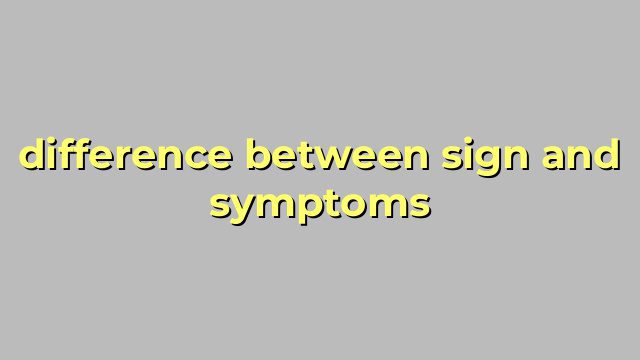The Difference Between Signs and Symptoms
When it comes to medical conditions, signs and symptoms are two terms that are often used interchangeably. However, there is a distinct difference between the two. Understanding the difference between signs and symptoms can help you better understand your health and communicate with your healthcare provider.
What are Signs?
Signs are objective indications or abnormalities that can be observed by someone other than the patient. Examples of signs include rashes, swelling, fever, higher or lower than normal blood pressure or heart rate, and lab test results. Signs are physical, measurable and can provide evidence of a disease, injury or medical condition.
What are Symptoms?
Symptoms, on the other hand, are subjective and are experienced by the patient themselves. Symptoms are typically what the patient feels or experiences such as headache, nausea, pain, dizziness or fatigue. Just like signs, symptoms can be caused by a variety of medical conditions or diseases. But unlike signs, they can be difficult to measure or objectively diagnosed.
The Importance of Knowing the Difference
While signs and symptoms may seem similar, it is important to differentiate between the two. Signs are an essential part of the medical diagnosis process, as they are typically clear indicators of a medical condition. Symptoms, on the other hand, can be more challenging to diagnose and may require more testing to determine the underlying cause.
Knowing the difference between signs and symptoms can also help you describe your condition more effectively to your doctor. By being able to accurately describe the signs and symptoms you are experiencing, you can give your healthcare provider a better understanding of what is going on with your health and how to proceed in your care.
In conclusion, signs and symptoms are often used interchangeably, but they are different. Signs are objective indications of a medical condition that can be observed by others. Symptoms are subjective experiences of the patient themselves. Understanding the difference between the two can help you better understand and communicate your health status to your healthcare provider.
Table difference between sign and symptoms
| Signs | Symptoms |
|---|---|
| Objective evidence of a medical condition | Subjective indications of a medical condition experienced by a patient |
| Can be measured, observed, or tested | Cannot be measured, observed, or tested by medical professionals |
| May not be noticeable to the patient | Always noticeable to the patient |
| Can be detected by health professionals during physical examination, laboratory tests or imaging tests | Includes pain, dizziness, fatigue, and other sensations reported by patient |
| May not always be present in a patient | Always present in a patient |
| May indicate a definite diagnosis | May accompany several conditions, making diagnosis difficult |

